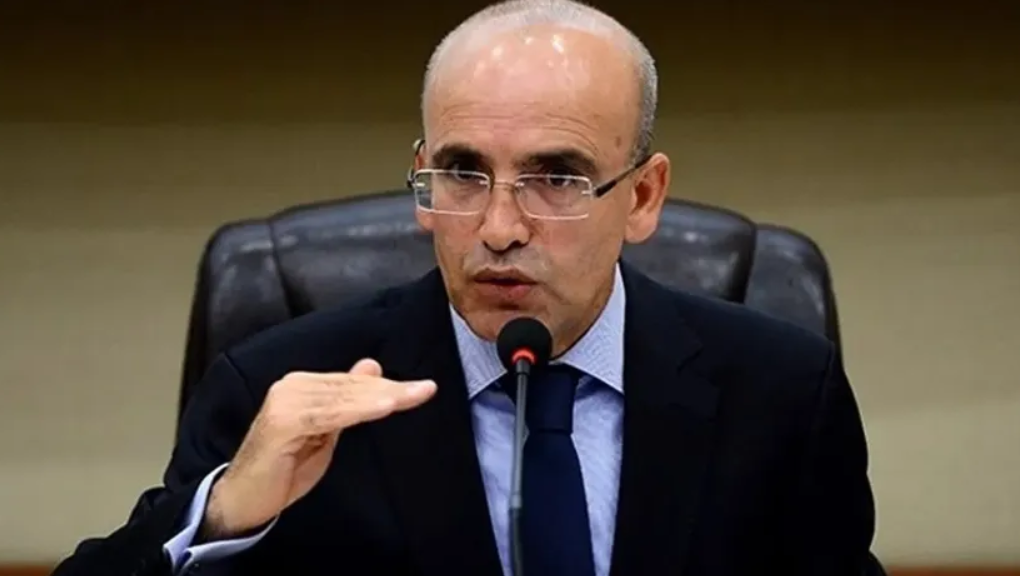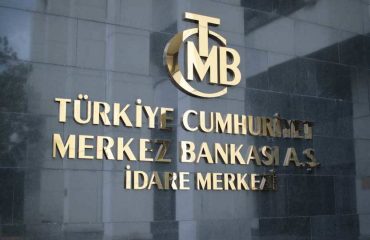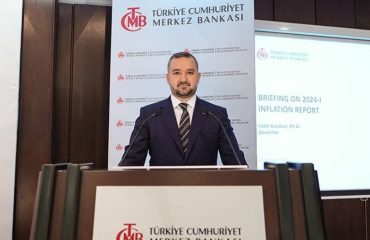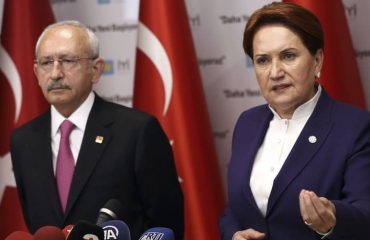

The Central Bank’s policy rate hike to 15 percent indicates that the Erdoğan’s low-rate policy has been abandoned after 27 months, but there is no sign yet of a return to the “rational ground” promised by Treasury and Finance Minister Şimşek, and the economic program to be implemented has not been announced.
After 27 months of stagnant rates, the Monetary Policy Committee of the Turkish Central Bank (CBRT) finally announced on June 22 that the policy rate would be increased to 15 percent, answering the rising expectations and anxious waiting.
Is the “Nass” era over, one asks as the word was used by Turkish President Recep Tayyip Erdogan in support of his low-interest rate policy, implying a reference to the interest ban in Muslims’ holy book, Quran. If the “Nass” era is over, have we returned to “rational ground,” as the Treasury and Finance Minister Mehmet Şimşek said? Let us see…
In the first paragraph of my previous article on “Why does Turkish Lira keep crashing? I wrote: “With the noticeable move to loosen government controls on foreign currency, combined with some uncertainty, the Turkish lira tumbled to record lows against the dollar, and one dollar skyrocketed to 23.22 on the evening of June 7. However, the rate had been just under 20 liras on the last working day before the election, while the benchmark rate determined in the interbank foreign exchange market had been 19.97. The Turkish lira has weakened by 16.3 percent in 8 days against the dollar. What is happening?”
When I sat down at the keyboard (June 22, 18.32), a dollar that was 23.6 in the morning jumped to 24.6 and then to 24.75 by 19.08: A 6.7 percent increase. By late afternoon, when I reread the article to check, the dollar was at 24.8. As of June 27 morning hours, it was 25,94, after seeing the record high of 26,1 the day before.
The dollar went up after 15 percent decision, but…
What happened? The much-anticipated CBRT Monetary Policy Committee policy rate decision was announced. In the interest rate bettings before the decision, the lowest expected interest rate was 15 percent. There were also those expecting 40 percent. The majority clustered around 25 percent. The exchange rate hiked when the policy rate was announced well below expectations. Is this the only reason? Of course not.
The World Bank categorizes countries into four groups. Türkiye is in the group of high-middle-income countries, that is, in the second league. Türkiye has much work to do to move up to the first league of high-income countries. This to-do list covers many areas, from a fair legal system that works fast to having a more educated population. I do not expect that any steps will be taken to address these issues.
On the other hand, at least we can enjoy our days in the second league with fewer heart palpitations and appreciate that we are not in the lower leagues. There is a sine qua non for this: A stable economy.
The need for 40-50 billion dollars
What we understand from a “stable economy,” in short, is the following: Low inflation, low-interest rates, corporate and bank balance sheets with issues within ‘normal’ limits in line with international norms, a monetary policy that focuses on price stability, a low budget deficit, low public debt, low private sector debt, a current account deficit as low as possible, growth that does not fluctuate too much, low unemployment…
Let us examine what we have in hand: Bank balance sheets were healthy; although some weakening actions were taken in the last two years, they are still okay. And the public debt – excluding any escalation in debt due to conditional guarantees – is low. All the remaining areas are problematic. Which ones are the most burning?
According to Central Bank data, as of April, the amount of external debt Türkiye has to repay over twelve months is $203 billion, some of which come from export and import credits; the due debt can quickly be paid by borrowing again. In other words, there is no additional need for foreign currency. Likewise, companies and banks can repay most of their maturing debts by borrowing again.
However, in a high-risk environment, the interest rate on foreign borrowing becomes a usury rate. Some institutions may want to avoid borrowing again at that level of interest. In addition, international financial institutions might barely extend their credits. For this reason, we would necessitate 40-50 billion dollars of financing.
Election promises and current account deficit
There is also the financing need arising from the current account deficit. Our current account deficit has soared because of the rise in imports due to the policies implemented before the elections and the upsurge in gold imports due to low-interest rates. It reached 29.7 billion dollars in the first four months. There was an outflow of 6.7 billion dollars from net errors and omissions. Consequently, a total financing requirement of 36.4 billion dollars emerged. We could meet only 14 billion dollars from the financial account (we can also say by borrowing). The rest was met from the Central Bank reserves.
Therefore, our first ‘burning’ problem has emerged: Despite difficulties in receiving net capital inflows in recent months, we need to finance the current account deficit and maturing external debt payments forthcoming. This is spurring demand for foreign exchange, which puts upward pressure on the exchange rate. And this is happening even though currency-protected deposits have largely contained domestic residents’ demand for foreign currency. We have to sharply reduce the current account deficit, which means lower growth and higher unemployment, or we have to find financing. Most likely both.
The budget deficit issue
Our second burning problem is the budget deficit, which is on an upward trend. The programmed budget deficit for this year was 3.5 percent of GDP; it will rise significantly. There is much work to be done in the earthquake zone. Some of these expenditures will put a burden on the budget as well as the EYT –early retirement system. In addition, the sharp depreciation of the lira will further increase the budget deficit. There are also promises made before the elections. When you add them all up, the budget deficit could reach 10 percent of GDP.
This is quite a high value. It is still undetermined how much of the earthquake expenditures will be covered by the budget. Within the 10 percent deficit calculation, a resource of 3 percent of GDP is assumed to be allocated. This could be 1 or 4. Let us say the budget deficit does not reach 10 percent of GDP but 8 percent; that is still an extremely high budget deficit. In addition, earthquake expenditures will last next year, and so will EYT. What measures will be taken to reduce this year and following budget deficits?
Still no economic program
There are no answers to these two questions, nor has an economic program been announced. It was said there would be a return to rational policies; that means the earlier program was not sound. Where is the new rational program?
Moreover, who will be on the economic team? The Minister of Treasury and Finance has changed. On June 22, four deputy ministers were appointed. The Governor of the CBRT has changed; nonetheless, the members of the Monetary Policy Committee (except the new governor), who took the interest rate decisions that led inflation to blow up, still stand. What about the BRSA? Its new chairman is the former governor of the Central Bank. The new team?
Let us assume a new program is announced to solve two burning problems, and the new team is all right. However, how long will the new team be able to implement the new program? Three months? Seven months? Until the forthcoming municipality elections? Five years? We do not know. What we know is that there was an Ağbal-Elvan syndrome two years ago when former Finance and Treasury Minister Lütfü Elvam and former CBRT Governor Naci Ağbal lost their seats after they were not willing to reduce the rates further.
Is the UAE visiting to find foreign financing?
On June 21, Vice President Cevdet Yılmaz and Treasury and Finance Minister Mehmet Şimşek made a spontaneous visit to the United Arab Emirates, and most probably, one of the main reasons for their sudden visit was the urgent need for foreign financing. Until a proper program and team are announced and confidence in their implementation restored, ‘lifeblood’ is needed because external financing will not immediately flow through normal channels. Financing is still required even if a proper program is not announced.
In such circumstances, it is no wonder that the exchange rate jumped after the 15 percent interest rate decision, which did not meet the expectations of a return to “rationality” regarding monetary policy, which is indispensable for a proper stabilization program. At least, the new statement does not include the “liralization” absurdity of the previous statements, and there is more emphasis on inflation. Moreover, it is expressed that interest rate hikes have begun, and there may be gradual increases in the process.
Actions speak louder than words
On the other hand, information on where inflation will head and the level of the new inflation target needs to be shared with us. How would it be possible to evaluate whether the 15 percent interest rate is too much or too little? Let alone the vague and unconvincing statement that “the medium-term inflation target of 5 percent will be achieved” is at a standstill. In this case, two criteria remain.
The first is the policy rate expectation, which is around 25 percent. The second is the inflation rate, which had been 39.6 percent in May, and due to the exchange rate hikes, we say “it will be fine if it stays around 45 percent” at the end of this year. Mind-blowing: the policy rate of 15 percent, the policy rate expectation of 25 percent, and an inflation rate of 45 percent.
Consequently, the reaction is harsh: The exchange rate jumps. We have only a series of tweet messages from the Minister of Treasury and Finance.
All in all, a sound program and the proper steps of that program are immediately expected rather than a few tweets.


